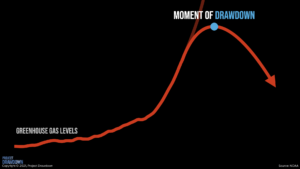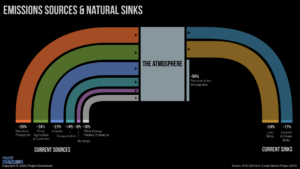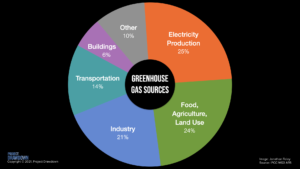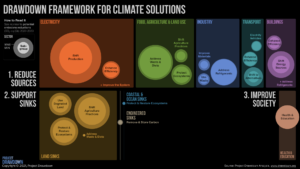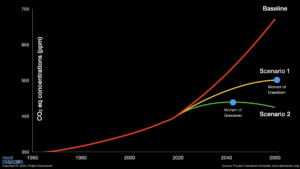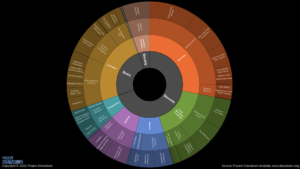Advancing Climate and Poverty Solutions through Equitable Change
Project Drawdown’s new initiative, Drawdown Lift aims to simultaneously address climate change and alleviate extreme poverty through the advancement of interdisciplinary solutions-based approaches for low and middle-income countries. During her presentation, Kristen will delve into the important role of equity in health and education as climate solutions, as well as poverty alleviation.
About the Speaker
Kristen Patterson, Director of Drawdown Lift, Project Drawdown
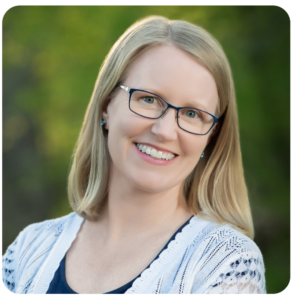 Kristen P. Patterson joined Project Drawdown in January 2021 as the Director of Drawdown Lift, which advances climate solutions that improve human well-being, enhance equity, and alleviate poverty in emerging economies in Sub-Saharan Africa and Asia. Kristen’s service as a Peace Corps volunteer in rural Niger deeply influenced her career, which has focused on the nexus of community development, public health, and environmental conservation. Prior to joining Project Drawdown, Kristen led PRB’s People, Health, Planet program, which focused on holistic programs that simultaneously address human health needs and planetary health. Previously, Kristen worked for The Nature Conservancy’s Africa Program, where she helped launch an integrated health and conservation project, Tuungane, in western Tanzania that continues today. She also has worked in Madagascar as a USAID Population-Environment Fellow, and conducted research on farmer-herder conflict resolution in Niger. Kristen has an MPH from the Johns Hopkins Bloomberg School of Public Health, an MS in Conservation Biology and Sustainable Development and a Certificate in African Studies from the University of Wisconsin-Madison, and a BA from Colby College.
Kristen P. Patterson joined Project Drawdown in January 2021 as the Director of Drawdown Lift, which advances climate solutions that improve human well-being, enhance equity, and alleviate poverty in emerging economies in Sub-Saharan Africa and Asia. Kristen’s service as a Peace Corps volunteer in rural Niger deeply influenced her career, which has focused on the nexus of community development, public health, and environmental conservation. Prior to joining Project Drawdown, Kristen led PRB’s People, Health, Planet program, which focused on holistic programs that simultaneously address human health needs and planetary health. Previously, Kristen worked for The Nature Conservancy’s Africa Program, where she helped launch an integrated health and conservation project, Tuungane, in western Tanzania that continues today. She also has worked in Madagascar as a USAID Population-Environment Fellow, and conducted research on farmer-herder conflict resolution in Niger. Kristen has an MPH from the Johns Hopkins Bloomberg School of Public Health, an MS in Conservation Biology and Sustainable Development and a Certificate in African Studies from the University of Wisconsin-Madison, and a BA from Colby College.
Recording of Kristen's Presentation
Resources Referenced
Drawdown Review – Free download available here
2020 Study by UNFPA: The Unmet Need for Family Planning Services
Guttmacher Institute– Adding It Up: Investing in Sexual and Reproductive Health
Why the term ‘population control’ is problematic:
Q+A
While I agree that strategically it’s important to avoid talking about population control, I’m also concerned about a message that suggests it’s perfectly OK to have as many kids as you want. Isn’t there a way we can support reproductive rights and still promote limiting family size? At the end of the day, don’t we agree there are too many people on the planet?
At Project Drawdown, we believe that sexual reproductive health and rights (SRHR) are an essential part of climate solutions and climate justice. It is important to note that we do not advocate for “small” or “ideal” family sizes; such policies are often racist, classist, and coercive. We advocate for all adolescents and women to have full bodily autonomy to decide whether, when, with whom, and how many children to have. When girls and women have access to education and family planning, they can best decide the spacing between births that leads to greater child and maternal health. Today, we still see a great unmet need for family planning in many countries around the world, and many pregnancies are unplanned.
Are there opportunities to include family planning in climate and conservation policy (both internationally and in the US)? And if so how do we go about that?
Reproductive health, the climate crisis, and the degradation and exploitation of lands and wildlife are inextricably linked. Women and girls around the world are oftentimes impacted first and worst by extreme weather and climate shocks. Systemic inequities in the social and economic spheres of life amplify climate change vulnerabilities for girls and women.
We must examine the power structures at play that are reflected through policy decisions. Between low- and middle-income countries and high-income countries, we see vast disparities in the levels of greenhouse gas emissions, consumption levels, and climate impacts. Inequities in both our education systems and health care systems continue to amplify disparities for under-resourced communities, Indigenous communities, and communities of color and in times of crises, these inequities are further amplified. For example, throughout the COVID-19 pandemic, we have seen how systemic inequities and environmental justice issues have disproportionately impacted communities of color in the United States. Internationally, we have seen a stark, unequal distribution of vaccines and resources to low- and middle-income countries.
It is important to note that even today, there is a lack of women’s representation at decision-making tables in many spaces in organizations, governments, and businesses. In spaces like the 26th climate change Conference of the Parties (COP) we have an opportunity to include reproductive rights for girls and women as important climate solutions that would have an impact on generations to come.
It is often difficult to dissociate ‘population control’–or even any discussions of limiting human overpopulation–from their connection to the dark history of eugenics and cruel programs of forced sterilization of BIPoC, which create suspicion about birth control in general and raise barriers to connect with members of groups victimized by such programs. What strategies can you think of to bridge those divides?
We appreciate you elevating this important issue. At Project Drawdown, we advocate for full access to sexual reproductive health and rights and education, and bodily autonomy. Context, barriers, and cultural norms and practices must be considered for SRHR and education around family planning. It is important for trusted people, organizations, or “champions” to educate others and their communities around women’s rights, family planning, and child and maternal health to best inform adolescents and women about the options available to them.
Community/grassroots organizing might be another important component to better enhance access to family planning and education through local and national policy. Men must be included throughout the process and also educated on the health benefits for their partners and families of healthy birth spacing and various forms of contraception available to them.
Manufacturing solar panels and wind farms require the use of fossil fuels and also use scarce minerals and metals. Eventually, we will no longer be able to replace them. Are Drawdown leaders considering solutions for the further future?
Project Drawdown is currently working on an updated version of the 2020 Drawdown Review that will examine new solutions and identify accelerators with new data; it should be released later this year.
Do you have any suggestions on how we can get funding for fuel efficient stoves in a remote area in Tanzania? We know where to get them and the women can install them themselves, but they are $75 each.
We acknowledge that there are many barriers to accessing fuel-efficient stoves in many different contexts. We would suggest looking into the work of the Clean Cooking Alliance and their partners. They highlight several sector resources including reports, tools, funding opportunities, and a sector directory that might aid in answering your questions.
During her call, Kristen referenced refrigerants that don’t act as greenhouse gases. I’ve looked through their sites but can’t find the article that she referred to about HVAC units for large buildings. Could you find the link to the article she was referring to?
Our colleague, Paul West, recently published an article titled, New EPA coolant rule is a no-brainer for addressing the climate crisis that you may want to check out. You can find information on climate-friendly supermarkets in the US here.

